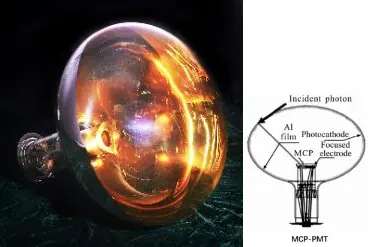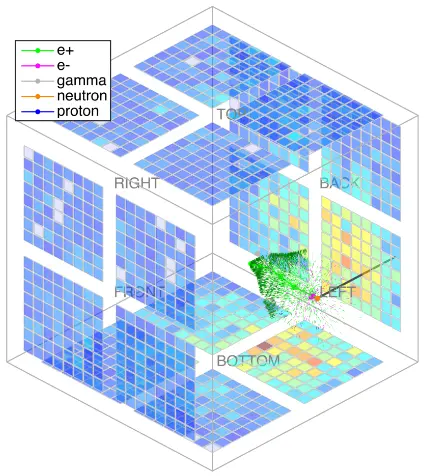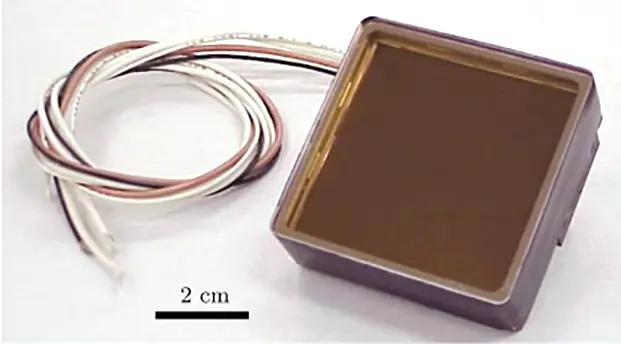In the scintillation and Cherenkov methods of neutrino detection, information about the detected events is obtained by analyzing light pulses. The most suitable device for this purpose is a photomultiplier tube (PMT). Multiplication in advanced PMTs is performed either in the conventional way on a dynode system or using microchannel plates (MCPs). Recently, semiconductor PMTs have also been used.
Due to the very small cross section of the reaction of neutrinos with matter, the detector sizes are usually large. For this reason, PMTs with a large light collection area defined by the size and geometry of the device are used. The number of PMTs in one detector can reach tens of thousands. Efficient detection requires high photocathode-dependent sensitivity of PMTs.
In addition to these criteria, the PMT timing response and the ability to operate efficiently in photon counting mode play an important role in neutrino detection. These parameters depend on the multiplication system.
MCP-based PMTs have advantages over dynode devices in terms of time resolution, since the time jitter due to the absence of a dynode system and, as a consequence, a shorter electron path is smaller in MCP-PMTs than in dynode devices. In the single-photon counting mode, the peak-to-valley ratio of MCP-PMTs is several times better than that of dynode devices, which allows noise cutoff and more efficient statistics acquisition by discriminating signals at low levels.
Silicon PMTs with high timing response are less efficient at filling the area, are noisier, and their performance is temperature dependent. In addition, silicon PMTs require more sophisticated electronics.
For these reasons, MCP-PMTs are actively used in neutrino detectors that are being developed recently. For example, the JUNO (Jiangmen Underground Neutrino Observatory) project uses 20,012 large-area PMTs, including 5,000 dinode PMTs provided by Hamamatsu Photonics, and 15,012 MCP-PMTs manufactured by North Night Vision Technology Co.

Square position-sensitive PMTs have been developed on the basis of large-area MCPs, enabling the entire detector area to be utilized without skipping, which is especially important in small multipurpose systems. For example, in the miniTimeCube experiment, a scintillator in the form of a 13×13×13 cm cube is surrounded by 24 64-channel square MCP-PMTs providing measurements at 1536 points.


Thus, the unrivaled temporal and single-photon resolution and the ability to efficiently fill the detector area give MCP-PMTs significant advantages in the development of neutrino detectors based on them.
VTС Baspik manufactures MCPs of different shapes and dimensions, as well as chevron and Z-stacks of MCPs. They can be used as a basis for fabricating MCP-PMTs for neutrino detector applications in future projects.